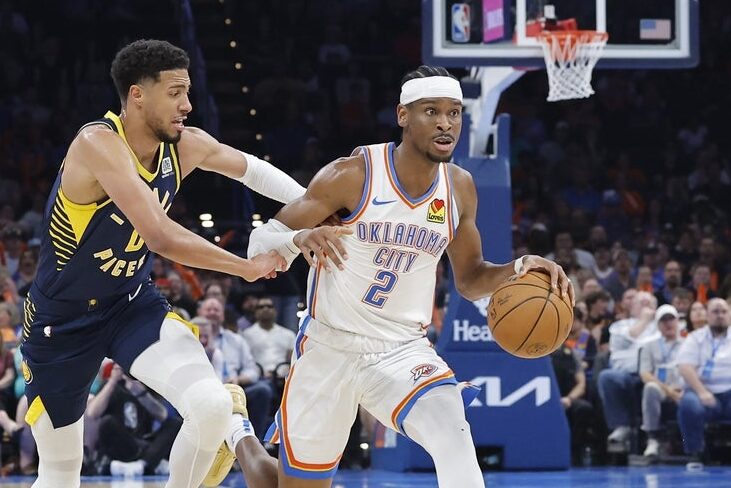Under Maintenance
We deeply apologize for interrupting your reading but Vendetta is currently undergoing some important maintenance! You may experience some layout shifts, slow loading times and dififculties in navigating.

It took an extra game, but the Indiana Pacers punched their ticket to the NBA Finals Saturday night, roughly 72 hours after the top-seeded Oklahoma City Thunder earned the West title.
This game will pin one of the league’s most electric offenses in the Pacers–who fittingly play to their name–and the most disruptive defense in the Thunder. One side has the MVP in Shai Gilgeous-Alexander and the other has another elite young point guard in Tyrese Haliburton.
On the court, this matchup will be incredibly intriguing for more reasons than one. Off the court, however, these two teams offer a different reason for intrigue–one that is the byproduct of the current financial landscape of the NBA.
The NBA is filled with parity, as evidenced by the Indiana Pacers making the Finals. They have been the best team in the East since the New Year, but they weren’t viewed as a legitimate contender until, well, they made the East Finals.
The current financial landscape in the NBA is that teams are operating with apprehension because they want to avoid the punitive second apron and luxury tax penalties.
Well, these two teams are not only lodged near the two aprons, but they’re ducking the tax completely, which is the first time that has happened since the luxury tax was implemented in 2002, according to Spotrac cap expert Keith Smith.
This isn’t the first time that a non-luxury tax team has made the Finals. Miami made it under the tax in 2022-23; Boston was under the tax in 2021-22; With LeBron James and Anthony Davis, the Lakers were still under the luxury tax when they won the Finals in 2020; the Warriors were under the tax in 2014-15 and 2016-17; San Antonio won it under the tax in 2014.
There’s a track record of it happening, but not a steep one.
Indiana is $1.7 million under the tax while Oklahoma City is $5.2 million, according to Spotrac. Both teams are in the ideal spot financially under the current CBA. Sam Presti and Kevin Pritchard have built teams that play fast, excel on both ends of the floor (OKC more than Indiana), have high-end depth … all at an inexpensive cost. They stylistically contrast, but they’re eerily similar in several ways, too.
Will these cores always be “inexpensive”? No. They will have to pay up eventually. But both teams did a great job of maximizing their strengths while silencing their weaknesses at perfect times, and the last two months are indicative of that.
***
Click Here for more NBA Content
Subscribe to Vendetta’s Twitch
Subscribe to Vendetta’s YouTube
Check out the Vendetta Shop
Check out Vendetta Fantasy Contests